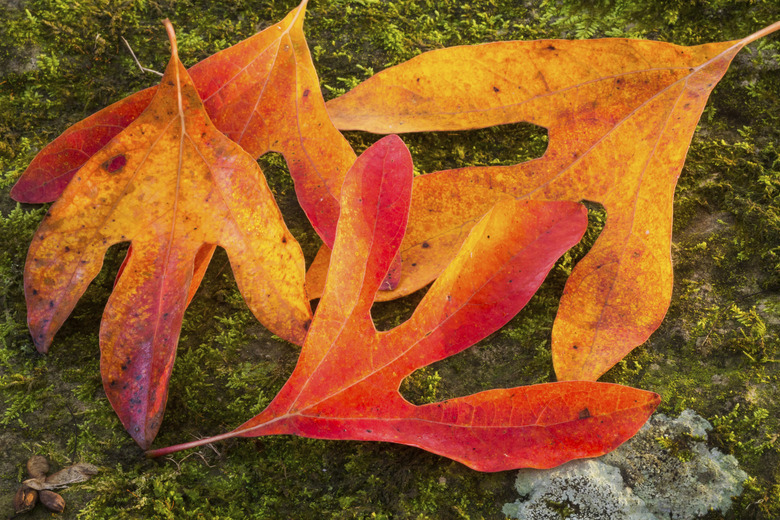How To Grow Sassafras Trees
Sassafras trees have aromatic, yellow-green spring flowers, with a fragrance similar to root beer, and the green leaves turns an impressive orange-red in fall. They grow in U.S. Department of Agriculture plant hardiness zones 5 through 9, where they thrive with little care.
Sassafras trees have aromatic, yellow-green spring flowers, with a fragrance similar to root beer, and the green leaves turns an impressive orange-red in fall. They grow in U.S. Department of Agriculture plant hardiness zones 5 through 9, where they thrive with little care. Although sassafras bark, oil and leaves were traditionally used to make a flavoring, it can pose a health risk, especially to pregnant women.
The Right Site
Sassafras trees grow well in dry, sandy soil if the area receives full, all-day sun or light afternoon shade. Although a fully mature tree can reach 80 feet, most only grow 20 to 30 feet tall, so sassafras trees are suitable for a backyard. The trees can reach a mature width of 25 to 40 feet, so grow them at least 15 to 20 feet away from buildings or other large plants. Sassafras trees work well as quick-growing shade trees, and the fragrant spring flowers also make them a pleasant addition near outdoor seating or entertaining areas.
- Sassafras trees have aromatic, yellow-green spring flowers, with a fragrance similar to root beer, and the green leaves turns an impressive orange-red in fall.
- Although a fully mature tree can reach 80 feet, most only grow 20 to 30 feet tall, so sassafras trees are suitable for a backyard.
The Bare Minimum
High drought tolerance and minimal care requirements make sassafras trees low-maintenance additions to the yard. They don't need any watering, especially if grown in well-draining, acidic soil. They will tolerate most soil types if the soil doesn't stay waterlogged, including rocky areas, without the need for supplemental watering or fertilizer. In well-draining soil, sassafras trees put down long taproots that seek out any moisture the trees need while making it difficult to dig it up or move them.
Making the Cut
Light pruning prevents sucker growth. Suckers are small stems that emerge around the bases of sassafras trees. If you prefer a tree with a single trunk, cut off the suckers just below the soil surface as they grow in and leave only a single trunk to reach maturity. Otherwise, leave the suckers in place for a more shrubby shape. You can remove the suckers at any time, either thinning them out or removing all that form. Female sassafras trees produce fruits after flowering, which sprout readily in the yard. Pull up the seedlings promptly so they don't establish anywhere that you don't want new trees.
- High drought tolerance and minimal care requirements make sassafras trees low-maintenance additions to the yard.
- In well-draining soil, sassafras trees put down long taproots that seek out any moisture the trees need while making it difficult to dig it up or move them.
Problems to Watch For
Although scale insects, Japanese beetles, weevils and promethea moths may infest the trees, damage is minimal and there's no need to take any steps to control these pests. Fungal leaf spot diseases can affect sassafras trees, but rarely require treatment. Common leaf spot fungal diseases include Phyllosticta spots, which form circular or angular gray or brown spots, and Septoria spots, which form gray or tan spots with a darker border. Raking up fallen leaves in autumn and avoiding overwatering and fertilization minimize these problems. Verticillium wilt, another fungal disease, infects the sapwood and causes entire branches to turn brown and die. A healthy tree can usually recover from the damage, but there are no cures for the disease. Prune out infected branches entirely, disinfecting the pruning saw by wiping it with a rubbing alcohol-soaked cloth before and after cutting, so the remaining healthy wood can focus its energy or fighting off the infection. If the tree is severely affected, remove it from your yard.
- Although scale insects, Japanese beetles, weevils and promethea moths may infest the trees, damage is minimal and there's no need to take any steps to control these pests.
- Fungal leaf spot diseases can affect sassafras trees, but rarely require treatment.
